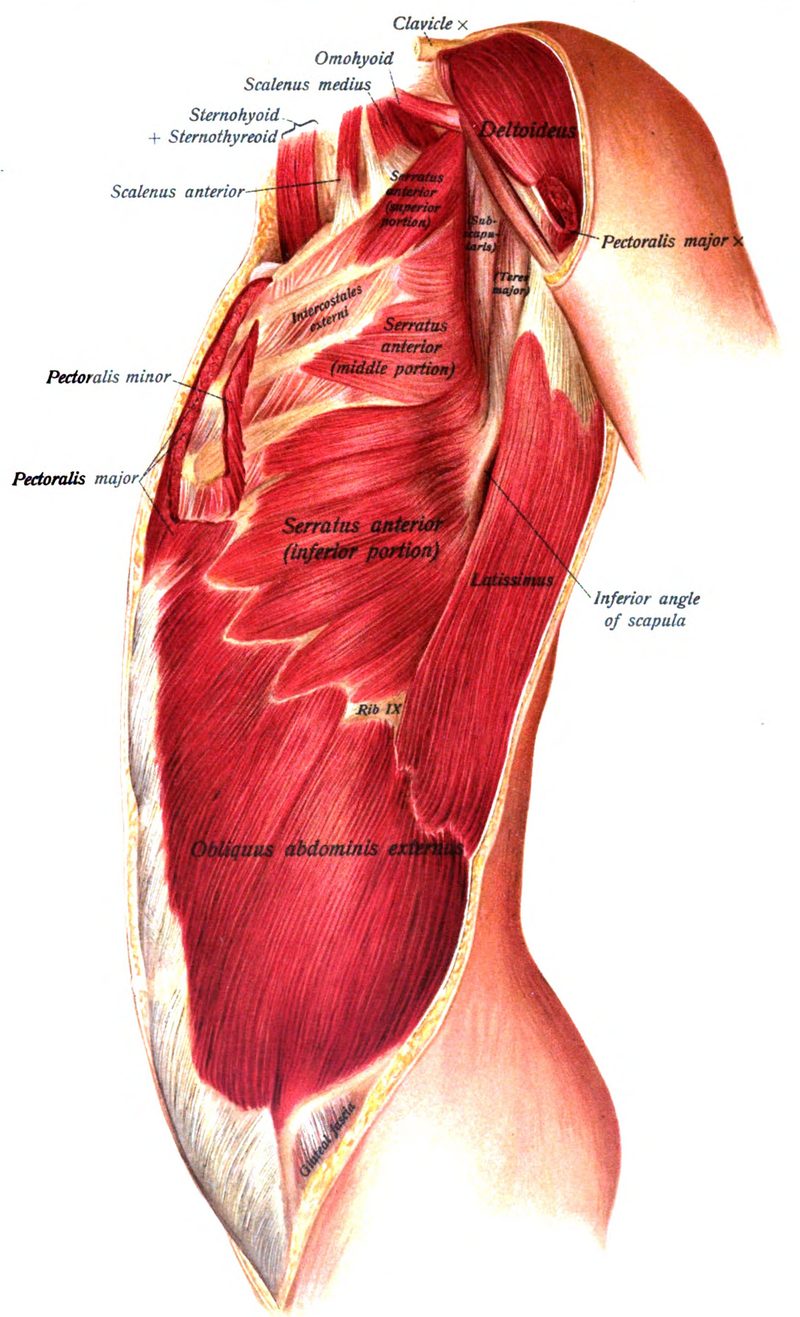Dysfunctional Shoulder Abduction, Scapular Stabilization and Scapular Depression Tests
These three functional movement tests are interrelated and therefore are addressed together when retraining is required because to normalize shoulder abduction the patient must be able to recruit with sufficient strength the normal force couple provided by the coactivation of the lower trapezius and serratus anterior muscles.
Anatomy and Biomechanics:
Normally during shoulder abduction the scapula upwardly rotates, externally rotates and posteriorly tilts, occurring as a result of a force couple involving the lower trapezius and serratus anterior. When these muscle groups are inhibited there is a loss of scapular stability and dysfunctional scapular mobility during elevation of the arm. The strength of the inhibitory influence by non-neutral spinal dysfunctions on these two muscle groups has not been fully appreciated by most clinicians. This is particularly true when attempts are made to “strengthen” the lower trapezius in the presence of a lack of spinal extension mobility that occurs secondary to FRS (flexed, side bent and rotated) dysfunctions. FRS dysfunctions from T6 thru 10 inhibit the ipsilateral lower trapezius. Likewise, ERS (extended, side bent and rotated) dysfunctions from T3-5, which limit thoracic flexion mobility, inhibit the serratus anterior. The result of this spinal inhibition on the lower trapezius and/or serratus anterior is that compensation is made by the levator scapula and upper trapezius and results in elevation, downward rotation and anterior tilt of the scapula. Also, restricted T3-5 rib mobility for anterior to posterior glides contributes to hypertonicity of the ipsilateral pectoralis minor resulting in protraction, internal rotation and anterior tilt of the scapula. The net effect of these muscle imbalances on the scapula results in an anteriorly tilted, downwardly rotated and medially facing glenoid fossa with impingement of the rotator cuff occurring during shoulder abduction.
Lower Trapezius
- Attaches to the spinous processes and interspinous ligaments fromT4-12 and the medial end of the spine of the scapula
- Functions: Upwardly rotates, posteriorly tilts and externally rotates the scapula and can assist in extension of the thoracic spine
- Innervation: Spinal Accessory nerve, Cranial XI and the dorsal rami from T4 -12
- Inhibited by FRS dysfunctions from T6-10
Serratus Anterior
- Attaches from along the medial border of the scapula and especially to the inferior angle, to ribs 1- 8 or 9
- Functions: upwardly rotates, posteriorly tilts and externally rotates the scapula and can assist in flexion of the thoracic spine
- Innervation: long thoracic n., C5, 6, 7
- Inhibited by ERS dysfunctions from T3-5

